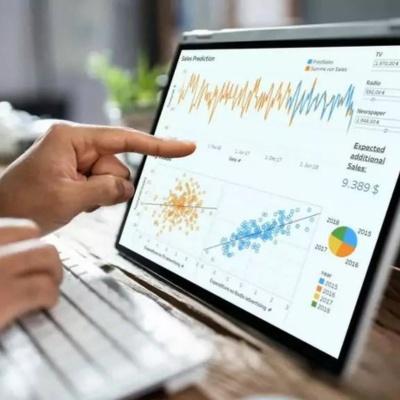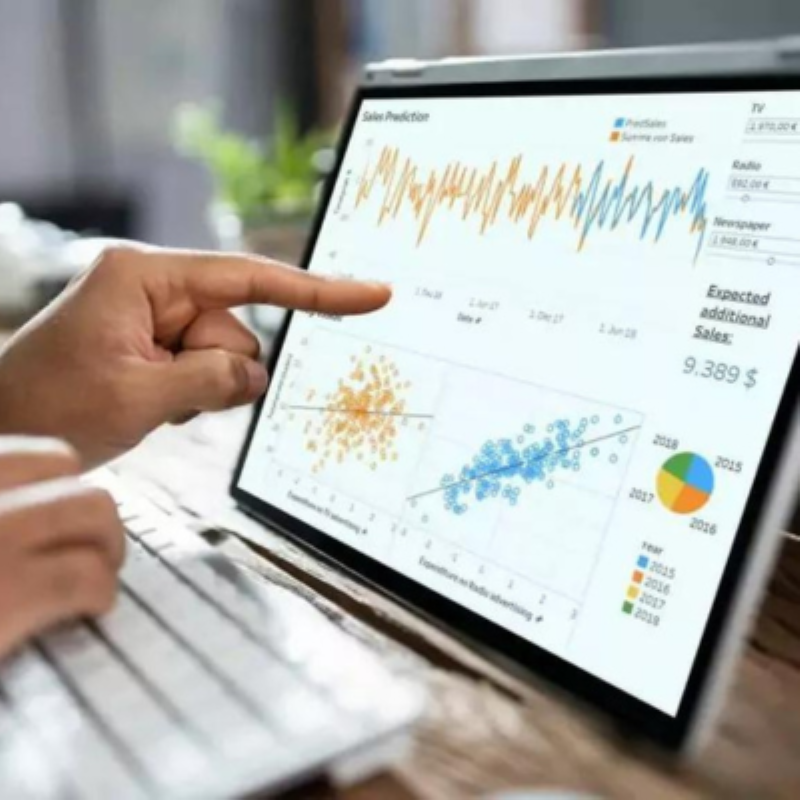Tableau, a widely acclaimed data visualization tool, has emerged as a powerhouse in the world of finance. Its impact is resonating across various industries, particularly in consulting, professional services, and finance. In this article, we’ll delve into what Tableau is, its pivotal role in the finance sector, and how it benefits organizations in their pursuit of financial success.
Understanding Tableau
Tableau is a renowned tool designed to transform complex, raw data into interactive, easy-to-understand visuals. It is excellent for converting convoluted datasets into insightful charts and graphs. Widely regarded as one of the premier tools for business decision analysis, Tableau has become the top choice for professionals in numerous sectors.

Tableau’s Influence on Finance
Within the finance industry, Tableau plays a critical role in guiding pivotal decisions related to resource allocation, pursuit of strategic goals, and revenue generation. It streamlines data analysis and reporting, extracting valuable insights from financial data. By leveraging Tableau, businesses can fine-tune their financial strategies, which results in cost reductions, revenue increases, and enhanced overall performance.
Benefits of Tableau in Finance
Tableau’s versatility shines brightly in the finance sector. It excels at crafting visual representations of financial data, simplifying tasks such as accounting, financial reporting, planning, and analysis. Moreover, it enhances efficiency by automating tasks that would otherwise be more time-consuming.
Learning Tableau for Finance
Mastering Tableau is a valuable skill for finance professionals. This powerful data visualization tool will replace manual spreadsheet processes in forward-thinking organizations as it provides deeper insights into financial data to enhance educated and insightful analysis and decision-making.
Tableau in Accounting
In accounting, Tableau’s data analytics and visualization features simplify tasks such as preparing financial statements, creating investor reports, and financial planning. Its drag-and-drop interface automates repetitive tasks, eliminating the drudgery associated with data preparation. These calculations and visualization tools facilitate real-time data analysis for budgeting, cash flow, earnings, and profit trends. Additionally, they simplify the generation of associated formatted reports, including profit and loss statements, balance sheets, and cash flow statements.
Tableau is invaluable for addressing routine financial tasks that might otherwise burden accountants on a daily basis, thereby freeing up time and energy for other, more complex projects.
Designing Financial Dashboards in Tableau
Financial dashboards in Tableau are robust and can include several key performance indicators (KPIs) and trends in financial data. The dashboard’s contents can be tailored to meet specific user needs and data access frequencies. Some of the commonly tracked metrics include:
- Gross Profit Margin
- Operating Profit Margin
- Operating Expense Ratio
- Net Profit Margin
- Working Capital
- Current Ratio
- Berry Ratio
- Cash Conversion Cycle
- Accounts Payable Turnover Ratio
- Accounts Receivable Turnover Ratio
Industries Harnessing Tableau vs. Those Missing Out
In industries where Tableau is embraced, such as retail, e-commerce, healthcare, and finance, organizations benefit from data-driven insights that optimize operations and enhance decision-making. Conversely, sectors like construction, farming, and manufacturing that do not utilize Tableau often miss out on these advantages, potentially impacting their efficiency and competitiveness.
| Industries Using Tableau | Industries Not Using Tableau |
|---|---|
| Retail & E-Commerce: analyze sales and trends, effectively manage products, quickly make informed decisions for better outcomes | Construction: limited tech use results in missing out on streamlined operations and effective cost-control measures |
| Healthcare: monitor patients, optimize care practices, improve hospital efficiency through data-driven insights and informed decision-making | Farming: miss data-driven insights for crop yield and weather patterns, which could significantly impact their farming outcomes |
| Finance: analyze financial data, detect potential risks, ensure regulatory compliance, contributing to informed decision-making and secure operations | Manufacturing: lack real-time production insights, quality control measures, and the ability to optimize their supply chain effectively |
Conclusion
Tableau has become an indispensable tool for companies in the finance and financial industry. It empowers organizations to transform intricate data into clear insights, facilitating informed decision-making, trend-spotting, and the improvement of overall financial strategies. With insightful visualizations and data sharing, Tableau simplifies communication and enhances team collaboration, ultimately leading to more effective and efficient financial outcomes.
[/fusion_text][fusion_text animation_direction=”left” animation_speed=”0.3″ animation_delay=”0″ hide_on_mobile=”small-visibility,medium-visibility,large-visibility” sticky_display=”normal,sticky”]
Curious to know more? Schedule a consultation with Thinklytics to know more about how data analytics can make your life easier and make you a hero at work.








